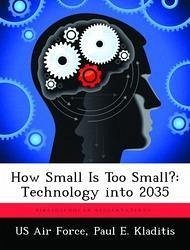The Department of Defense (DOD) anticipates the realization of biomimetic bird and two-inch, insect-sized systems within the 2015-47 period. Although robot systems of one millimeter or smaller are not explicitly specified in current DOD and Air Force technology road maps, the technological aims towards this size can be clearly inferred from official documents. This research assesses the likelihood of, and barriers to, the realization of true microrobots and nanorobots (defined as submillimeter-sized robots of micro-meter and nanometer proportions, respectively) that can perform in military applications by 2035. This research finds that the realization of true microrobots for military applications by 2035 is unlikely, except for a single case of microrobots. Furthermore, the realization of true nanorobots for military applications by 2035 is even more unlikely. Technological advancements accrued through striving towards the goals of true microrobots and nanorobots are critical if the United States is to achieve a technological edge in more realizable-sized miniature robots for military application. Additionally, these technological advancements are critical for reducing the size and payload of other military systems, including satellites, aircraft, weapons, C4ISR (C4ISR concept of command, control, communications, computers, intelligence, surveillance, and reconnaissance), and portable sensors. Thus, regardless of the feasibility of submillimetersized robots by 2035, the United States still should sponsor research and development of both true microrobots and nanorobots.
Hinweis: Dieser Artikel kann nur an eine deutsche Lieferadresse ausgeliefert werden.
Hinweis: Dieser Artikel kann nur an eine deutsche Lieferadresse ausgeliefert werden.








